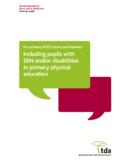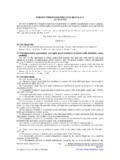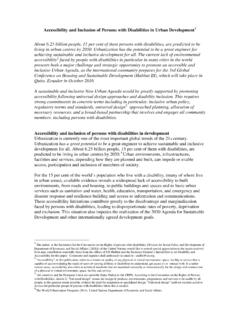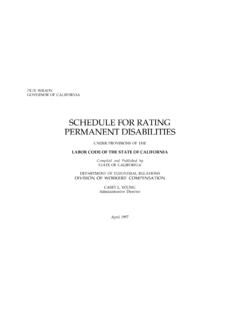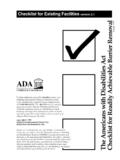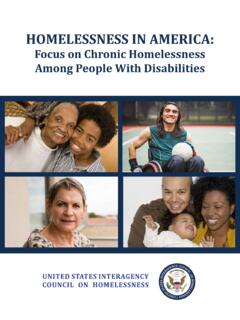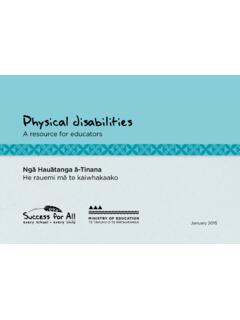Transcription of Communicating With and About People With Disabilities
1 1 Okoro CA, Hollis ND, Cyrus AC, Griffin-Blake S. Prevalence of Disabilities and Health Care Access by Disability Status and Type Among Adults United States, 2016. MMWR Morb Mortal Wkly Rep. 2018; 67:882 887. DOI: 1 in 4, or 61 million, adults reports having some form of a Disability is part of the human experience, but sometimes People use words or phrases that are insensitive and do not promote understanding, dignity, and respect for People with Disabilities . Most often than not, this is not intentional, but is disrespectful just the LanguageCenters for disease control and PreventionNational center on Birth Defects and Developmental DisabilitiesCommunicating with and About People with DisabilitiesTipsUse Do not useEmphasize abilities, not limitationsPerson who uses a wheelchairConfined or restricted to a wheelchair, wheelchair boundPerson who uses a device to speakCan t talk, muteDo not use language that suggests the lack of somethingPerson with a disability Disabled.
2 HandicappedPerson of short statureMidgetPerson with cerebral palsyCerebral palsy victim Person with epilepsy or seizure disorderEpilepticPerson with multiple sclerosisAfflicted by multiple sclerosisEmphasize the need for accessibility, not the disabilityAccessible parking or bathroomHandicapped parking or bathroom Do not use offensive languagePerson with a physical disabilityCrippled, lame, deformed, invalid, spasticPerson with an intellectual, cognitive, developmental disabilitySlow, simple, moronic, defective, afflicted, special personPerson with an emotional or behavioral disability, a mental health impairment, or a psychiatric disabilityInsane, crazy, psycho, maniac, nutsAvoid language that implies negative stereotypes Person without a disabilityNormal person, healthy personDo not portray People with Disabilities as inspirational only because of their disabilityPerson who is successful, productiveHas overcome his/her disability, is courageous People -first language is used to communicate appropriately and respectfully with and About an individual with a disability.
3 People -first language emphasizes the person first, not the disability. For example, when referring to a person with a disability, refer to the person first, by using phrases such as, a person who .. , a person with .. or, person who has .. These are some general tips you can follow:For more resources on disability inclusion, visit: language is the best place to start when talking to a person with a disability. If you are unsure, ask the personhow he or she would like to be described. It is important to remember that preferences can vary.










